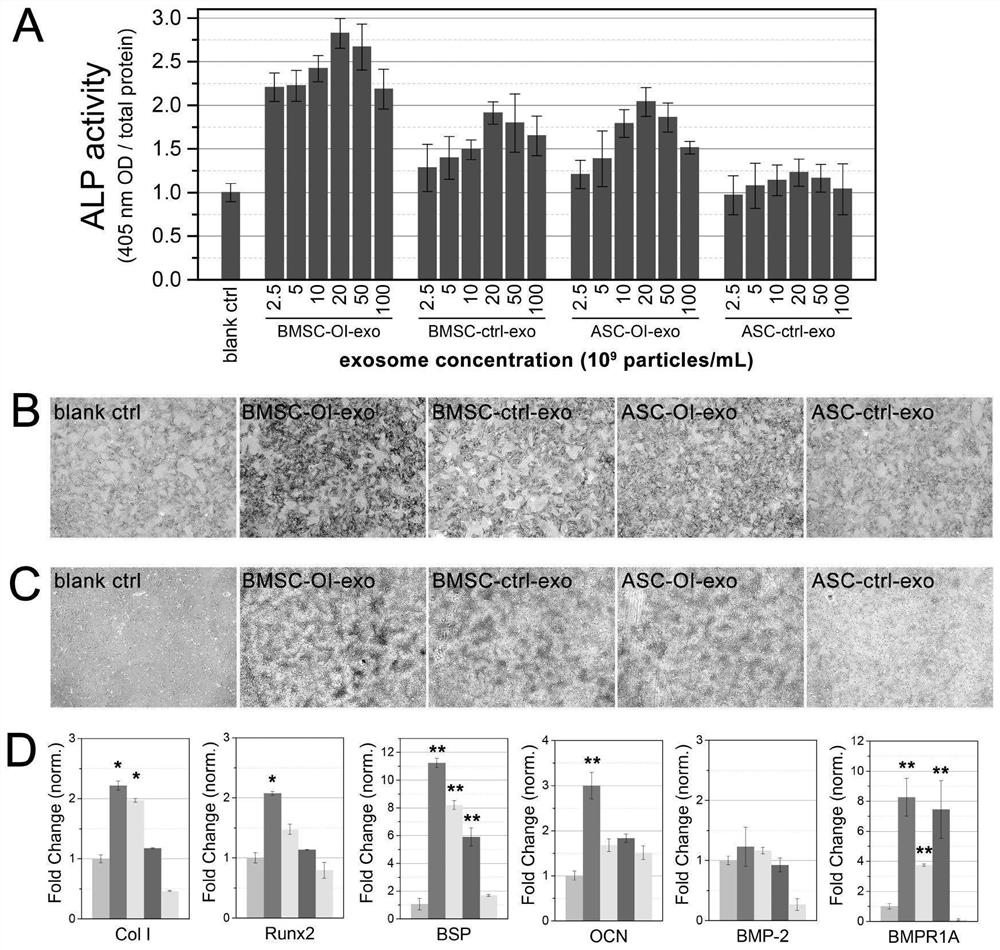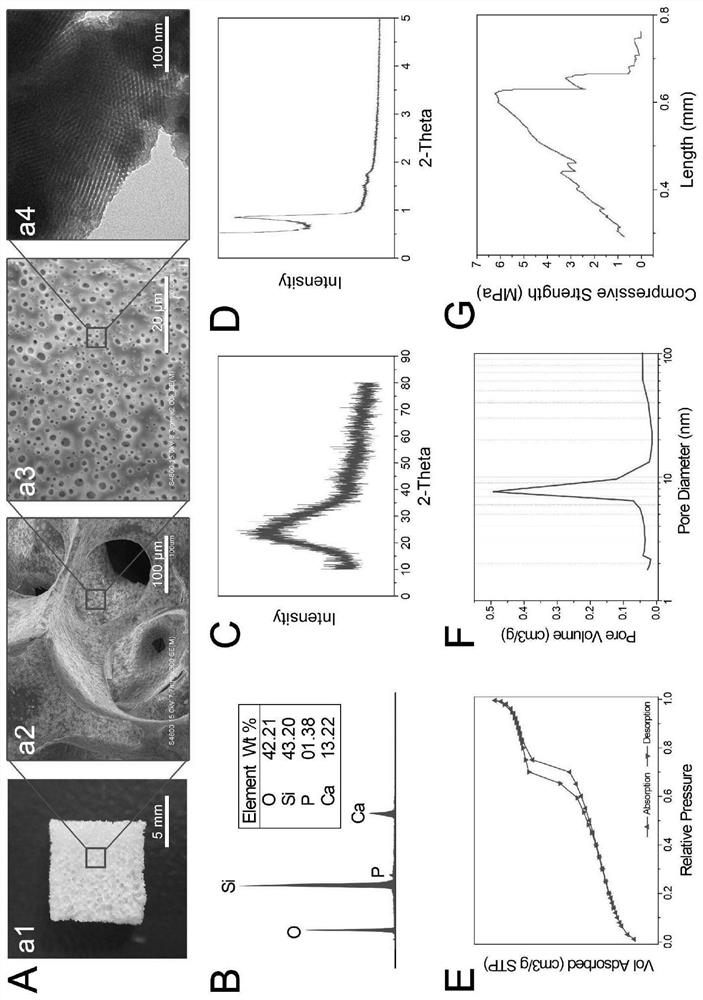Multistage micro-nano structure bone repair scaffold for freeze-drying delivery of exosome
A technology of micro-nano structure and exosomes, which is applied in the field of medical biomaterials, can solve the problems of long-term preservation, biological activity, and functional maintenance for research, so as to achieve complete regeneration/repair, improve bone repair ability and new bone Growth ability, effect of improving biological activity
- Summary
- Abstract
- Description
- Claims
- Application Information
AI Technical Summary
Problems solved by technology
Method used
Image
Examples
Embodiment 1
[0029] Example 1 Extraction and identification of exosomes
[0030] (1) Cell extraction and identification
[0031] Rat BMSC extraction: 4-week-old male SD rats weighing 80-100 g were killed by intraperitoneal injection of 1% pentobarbital sodium in three doses, soaked in 75% ethanol for 10 minutes, and placed under sterile conditions Take out the femur and tibia, remove the epiphysis at both ends with surgical scissors, and expose the two ends of the marrow cavity. Use a 10mL syringe to draw α-MEM medium containing 10% FBS and 1% penicillin / streptomycin double antibody to repeatedly wash the bone marrow cavity, and use a pipette gun to blow evenly to obtain a uniform bone marrow cell suspension. The characteristics of wall growth were inoculated in disposable polystyrene cell culture flasks (Corning Corning 75cm2 vented cap right-angle culture flasks), and cultured in a cell culture box with a temperature of 37°C, 5% CO2 / 95% air, and saturated humidity , the medium was chan...
Embodiment 2
[0038] Example 2 Evaluation of the osteoinductive performance of exosomes
[0039] The osteoinductive properties of exosomes in the four groups were evaluated by ALP activity quantification, ALP staining, mineralization staining, and osteogenesis-related gene rtPCR
[0040] (1) Quantification of ALP activity in vitro
[0041] The rBMSC cell suspension was inoculated in a 96-well plate at a density of 5000 cells / well, and after culturing for 24 hours, the medium was replaced with α-MEM medium containing exosomes (containing 2% exosome-free serum, 1 % double antibody), placed in the incubator to continue culturing for 4 days, taken out to detect ALP activity. The experimental steps for detecting ALP activity are as follows: ALP buffer (0.1mol / L glycine, 1mmol / L MgCl2·6H2O) and ALP working solution (1mg / mL PNPP-Na / ALP buffer) were prepared. Aspirate the cell culture medium and wash it twice with PBS, add 1 mL of 1% NP-40 lysate to each well and shake at 37°C for 90 minutes to l...
Embodiment 3
[0049] Embodiment 3 MBG scaffold and exo-MBG scaffold preparation and material characterization
[0050] (1) Preparation of MBG scaffold and exo-MBG scaffold
[0051] In a water bath at 40°C, add 300g of absolute ethanol, 6mL of 1mol / L HCl and 24g of F127 in sequence, stir vigorously until completely dissolved and the solution is clear; add in sequence 4.56g of calcium nitrate tetrahydrate and 1.29mL of triethyl phosphate, dropwise add 31.2 g tetraethyl orthosilicate, kept in a 40°C water bath and vigorously stirred for 24 hours, and the product was rotary evaporated at 60°C to obtain a viscous MBG sol. The PU sponge was cut into discs with a diameter of 5mm as the scaffold macroporous template, 6g of MBG sol and 2.5g of polymer microspheres were evenly mixed, poured into the PU sponge, and squeezed repeatedly until evenly distributed on the sponge. Dry in an oven at 60°C for 72 hours, and then transfer to a muffle furnace for calcination at 550°C for 6 hours to obtain an MBG...
PUM
 Login to View More
Login to View More Abstract
Description
Claims
Application Information
 Login to View More
Login to View More - R&D
- Intellectual Property
- Life Sciences
- Materials
- Tech Scout
- Unparalleled Data Quality
- Higher Quality Content
- 60% Fewer Hallucinations
Browse by: Latest US Patents, China's latest patents, Technical Efficacy Thesaurus, Application Domain, Technology Topic, Popular Technical Reports.
© 2025 PatSnap. All rights reserved.Legal|Privacy policy|Modern Slavery Act Transparency Statement|Sitemap|About US| Contact US: help@patsnap.com



